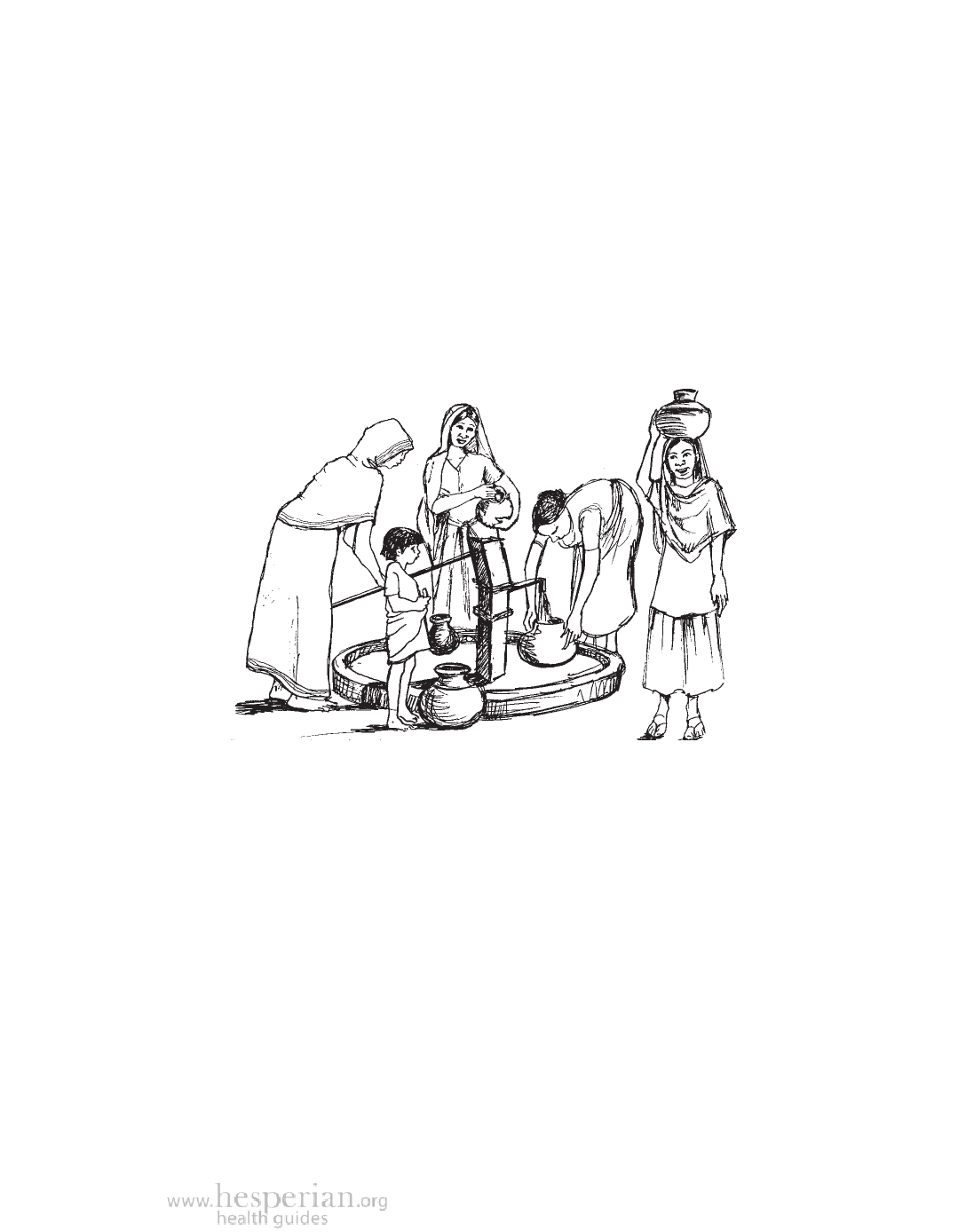
Protec t Water Sources
75
Protect Water Sources
Water is either surface water (from rivers, streams, lakes, and ponds) or
groundwater (water that collects underground and comes up from springs
or wells). Because surface water is often contaminated, it should not be used
for drinking unless it is treated first (see pages 92 to 99). Groundwater is
usually free of germs because it is filtered when it seeps through sand and
soil. However, groundwater can be contaminated by natural minerals such as
fluoride or arsenic (see page 61), by leaking sewer lines, septic tanks, or toilets,
by waste dumps, or by toxic chemicals from industry and agriculture.
When land and waterways are not well cared for, the amount of groundwater
can also become dangerously low. Where land has been cleared of trees
and vegetation, rain that once soaked into the ground and was stored as
groundwater can run off to rivers and the ocean.
The best ways to protect both groundwater and surface water are to:
• practice sustainable farming (see Chapter 15).
• build and use safe toilets (see Chapter 7).
• protect the area where water collects, called the watershed or
catchment area (see Chapter 9).
As more people settle around and use a water source, it becomes harder to
protect. In places with industrial activity, water may be overused and polluted
and the people who need it most may not be able to prevent the problem. These
problems can be solved only when a community organizes for water security,
puts pressure on governments, and enforces rules on industry.
A Community Guide to Environmental Health 2012